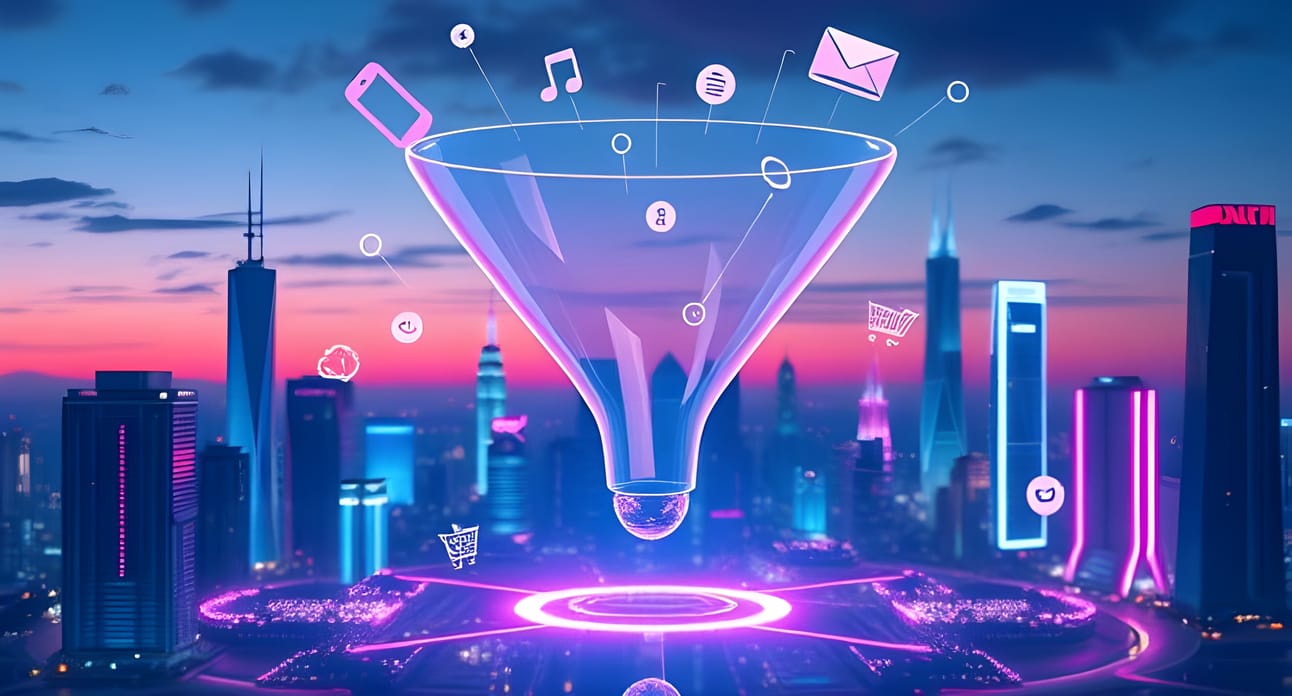- Creator Bytes
- Posts
- Beyond the Funnel: Why Today's Customer Journeys Are More Like Neural Networks
Beyond the Funnel: Why Today's Customer Journeys Are More Like Neural Networks
The marketing funnel isn't dead - it's evolved

One question keeps surfacing in marketing industry conversations: Has the traditional marketing funnel outlived its usefulness? The funnel isn’t dead — but it has transformed in ways that demand our attention and adaptation.
The Classic Funnel: A Brief Refresher
For decades, marketers have relied on the predictable stages of the marketing funnel: Awareness, Interest, Consideration, Intent, Evaluation, and Purchase. This linear progression made sense in a world where customer touchpoints were limited and controlled primarily by brands. Consumers would enter at the top through mass advertising, narrow their options based on interest, and eventually make their way to a purchase decision.
But today’s reality looks drastically different.
Why the Traditional Funnel Falls Short
The conventional funnel model struggles to capture several key aspects of modern consumer behavior:
Non-linear paths: Today’s customers don’t move neatly from awareness to purchase. They jump stages, circle back, and explore multiple options simultaneously. Research from Harvard Business Review confirms that B2B buyers now regularly loop back and forth between different decision stages.
Multi-device journeys: A customer might discover your brand on Instagram, research on their laptop, read reviews on their tablet, and finally purchase through a mobile app — all within a single decision process. According to Google’s research, 90% of consumers use multiple devices to complete online purchases.
Peer influence: Word-of-mouth now happens at scale through reviews, social media, and online communities, influencing decisions at every stage. BrightLocal’s consumer survey shows that 91% of consumers regularly read online reviews, and 84% trust them as much as personal recommendations.
Post-purchase engagement: The relationship doesn’t end at purchase; advocacy and loyalty represent critical stages that feed back into acquisition. Bain & Company research demonstrates that increasing customer retention rates by just 5% can increase profits by 25% to 95%.
The Neural Network Model: A Better Metaphor
Rather than abandoning the funnel concept entirely, I propose we think of modern customer journeys as neural networks — intricate webs of connections where information flows in multiple directions simultaneously.
In this model:
Touchpoints serve as nodes in a complex network
Connections between touchpoints can strengthen or weaken based on customer experience
Information flows in multiple directions, not just downward
The system continuously learns and adapts
This neural network approach acknowledges that a single social media post might trigger immediate purchase for one customer while barely registering awareness for another. It recognizes that customers may simultaneously be at different stages for different products within your ecosystem.
What This Means for Modern Marketers
Embracing the neural network model requires a shift in marketing strategy:
1. Omnichannel integration is non-negotiable
Your marketing channels must work together seamlessly. A customer who researches on your website should receive consistent messaging when they see your social media ads or open your email. This integration builds trust and reduces friction in the decision process. Aberdeen Group research shows companies with strong omnichannel customer engagement retain 89% of their customers, compared to 33% for companies with weak omnichannel strategies.
2. Content must serve multiple journey stages
The same content might need to simultaneously educate newcomers while reassuring those closer to purchase. High-performing content pieces often serve multiple functions within the customer journey.
3. Data collection and analysis become more sophisticated
Understanding these complex journeys requires robust analytics capabilities. Attribution modeling needs to evolve beyond last-click to recognize the interconnected nature of touchpoints. McKinsey’s research highlights that companies using data-driven personalization delivered five to eight times the ROI on marketing spend.
4. Personalization at scale becomes essential
When journeys are no longer linear, delivering the right message at the right time becomes both more challenging and more crucial. AI-powered personalization tools help navigate this complexity. Epsilon research indicates 80% of consumers are more likely to purchase when brands offer personalized experiences.
Practical Implementation Steps
To adapt your marketing strategy to this new reality:
Map your current customer journeys — Identify the most common paths customers take, including the seemingly illogical ones.
Identify connection points — Where do customers move between channels, and what triggers these transitions?
Find friction points — Where do customers get stuck or abandon their journeys?
Build feedback loops — Create mechanisms for post-purchase engagement that strengthen relationships and generate insights.
Test and iterate — The neural network is constantly evolving; your strategy should too.
Is the Funnel Truly Dead?
The funnel remains a useful conceptual tool for understanding the general progression from awareness to purchase. However, it’s now just one component of a more sophisticated understanding of customer behavior.
The most successful marketers today embrace the complexity of modern consumer journeys while maintaining clarity in their strategic approach. They recognize that customers don’t simply fall through a funnel — they navigate a dynamic network of influences, information, and interactions.
By shifting our perspective from the linear funnel to the interconnected neural network, we can create marketing strategies that truly resonate with how people make decisions in the digital age.
The marketing funnel isn’t dead — it’s evolved. And so must we.
What’s your experience with mapping customer journeys? Do you still find the traditional funnel model useful, or have you adopted new frameworks?